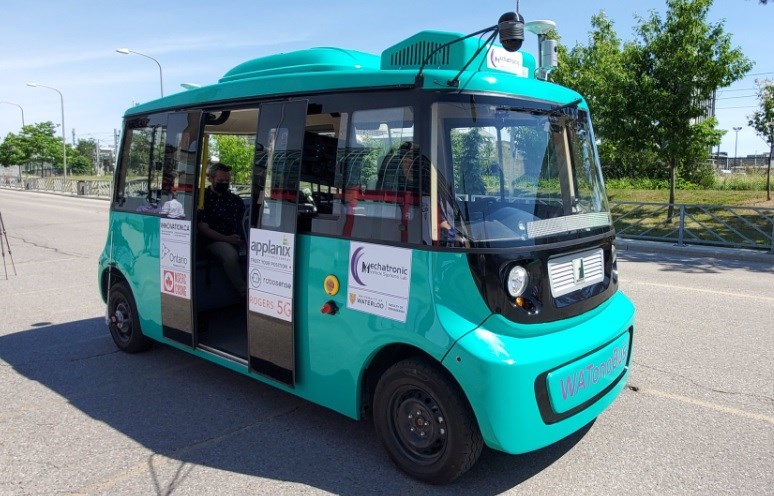York Region could become home to the first permanent autonomous transit vehicles as Markham and York Region Transit explore making the idea a reality.
They are partnering with the Canadian Urban Transit Research & Innovation Consortium (CUTRIC) to develop an autonomous transit pilot within Markham, using short routes that could become part of the transit service permanently. CUTRIC hopes to develop a pilot over the next two years.
President and CEO Josipa Petrunic said though there have been several test runs of the concept throughout the country, they hope to make this the one that can showcase that shuttles can work in a long-term, permanent way.
“That’s what we’re trying to overcome with York Region as a leader,” she said. “Making this a bus by another name. It’s smaller, but it’s nimbler, it’s cheaper, it’s electrified. But it’s still unproven in many applications.”
The concept is for smaller vehicles that can transport between six to 15 passengers on routes too uneconomical for more conventional bus services. The buses would travel at a slow speed, around 10 km/h, using different lanes than general traffic.
In Markham, Petrunic said they are exploring routes through Metrolinx GO Stations or key hubs like the Markham Stouffville Hospital. Eventually, the organization hopes to have autonomous shuttles in communities throughout the GTA.
York Region Transit and Markham put themselves forward as the locales to develop a pilot, Petrunic said. They hope to develop something over the next two years, but the process will involve finding a manufacturer, a shuttle company, some road infrastructure work and more.
“The complexities are so significant,” she said, adding that they have many experiences now they can draw from. “We’ve gotten over the hardest hump of the early pilots that weren’t a super success. Now we’re getting to the stabilized demonstrator zone where we can demonstrate these things work with transit.”
York Region has included the idea of autonomous drivers in its draft transportation master plan due to pass this month. Although it does not set out any specific actions on the concept, it is something the transit service said it is working toward.
“York Region has been working with various stakeholders, including (CUTRIC), to identify potential routes to pilot autonomous transit shuttles,” the action plan said. “Multiple routes have been identified for further evaluation in 2022.”
The shuttles are running with drivers who can take over in previous pilots, but there have been some issues. One of the shuttles crashed with a safety attendant — but no passengers — in Whitby last December, which Petrunic said led to the end of that pilot. She also said there were issues with it causing congestion in a pilot in Montreal.
But Petrunic said it is important to understand that the shuttles will be brought online slowly, gradually improved and running at low speeds. She added that the shuttles are different from the idea of autonomous vehicles in the general automotive sector and will not be free to go anywhere. Instead, they will run separately from other traffic at slow speeds on set routes.
“Lots of stuff will go wrong," she said, adding that it's "a cost to the taxpayer. But the reality is, we’re not going to get to the decarbonized future without dealing with those difficulties upfront. That’s why we’re not looking to launch 100 shuttles all at once."
The shuttles could offer a way to get public transit to needed places and get more cars off the road to address traffic congestion, Petrunic said.
“Anything that advances transit technology over the long-term,” she said. “The good people of Markham and York Region have really put their hands up to be leaders in this space, and I have no doubt other cities will follow them in the future.”



